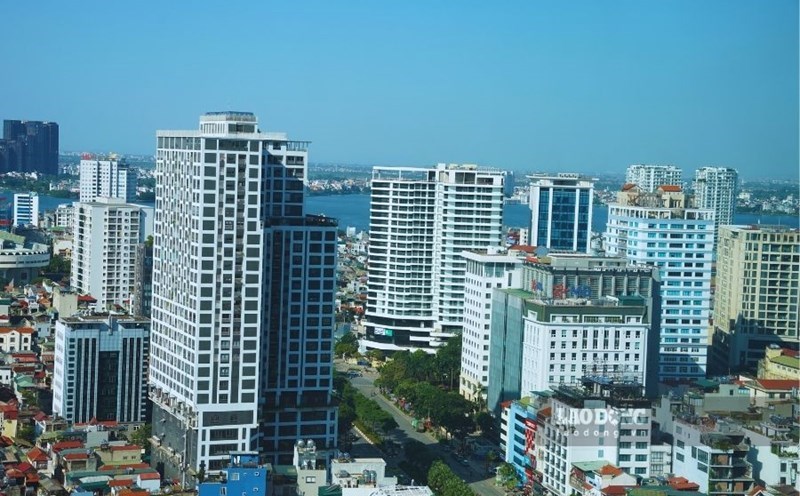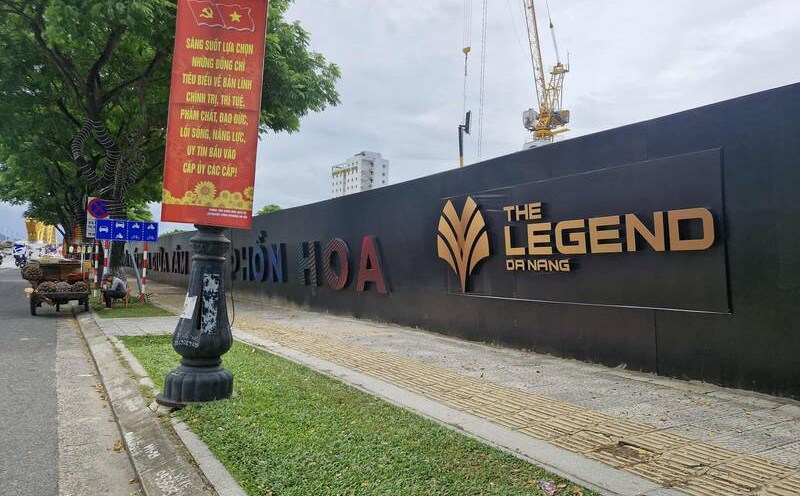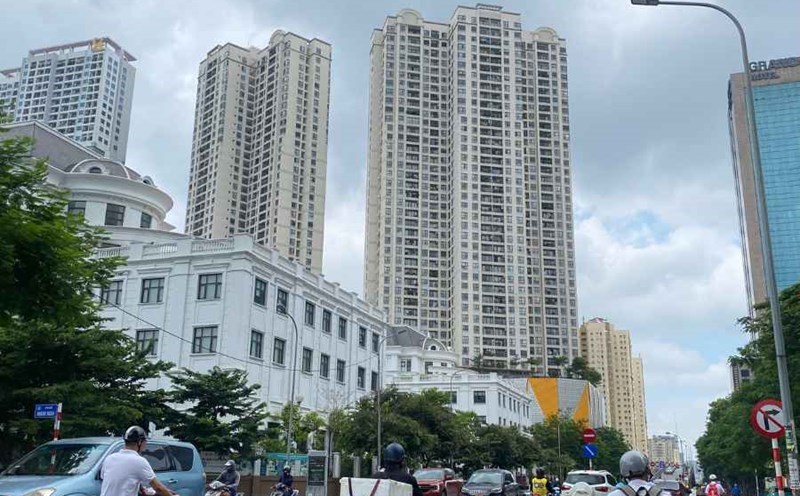Although it has not yet met actual needs, the supply of apartments in Hanoi for more than a year has recorded positive signs of recovery. However, the supply structure is tending to be increasingly unbalanced.
Research data from the Vietnam Association of Realtors (VARS) shows that in the first half of 2025, 60% of the supply of newly opened apartments will be products priced at over 80 million VND/m2. Some apartment projects in the provinces on the outskirts of Hanoi also have prices starting from 55 million VND/m2.
Although in the coming time, the supply of affordable apartments will return to Hanoi from social housing projects implemented thanks to the determination of the Party, State, Government, ministries and branches as well as the efforts of the business community. However, the phase difference is still very difficult to improve when the number of apartment projects over a hundred million per square meter is increasing "udutately".
In general, the whole market can be affirmed that the supply of affordable commercial apartments (under 25 million VND/m2) has "extinct" in Hanoi. The supply of mid-range apartments (VND 25-50 million/m2) is also gradually shrinking in some old apartment projects and is at risk of disappearing in the near future. Even high-end products with new opening prices under 60 million VND/m2 are increasingly rare.
This reality has pushed the market into a state of serious supply-demand imbalance, increasing pressure on selling prices, pushing the dream of owning a home away from reach of the majority of urban people, even those with high average incomes.
Accordingly, VARS research data shows that in the second quarter of 2025, the Hanoi area will continue to lead the country in terms of growth rate of apartment prices. The average selling price of apartments in Hanoi in the second quarter of 2025 reached an average of 75.5 million VND/m22, an increase of about 7.7% compared to the previous quarter and a sharp increase of 87.7% compared to the original period (2019). The fact that investors open new projects for sale at high prices of over 75 million VND/m2 and continue to offer inventory with adjusted prices increases helps the secondary apartment price level increase again.
However, in reality, secondary liquidity has not improved much, apartment transfer transactions are still mainly recorded in apartment projects in the metropolis that have been formed and attracted residents to live in, with prices around 50 million VND/m2 or high-end apartments in the central area.
The current price is not only far beyond the affordability of low-income people but also beyond the reach of those in the upper middle-income group. According to feedback from real estate brokers who are members of VARS, many young customers, even with good incomes, at 40-50 million VND/month, still do not "d like" to buy a house without financial support from their family.
The pressure to repay loans is too great, especially when interest rates "float" after a period of strong increases, becoming a significant psychological barrier for young people - those who focus on quality of life, living experience and flexibility in consumption rather than deciding to borrow long-term for decades to own a small apartment.
VARS believes that in the short term, apartment prices in Hanoi will continue to increase due to high input costs and investors' profit expectations are still high. A large number of investors are currently not under significant financial pressure, including pressure from loan costs, so there is no motivation to adjust down selling prices. On the contrary, it is expected that there will be an upward trend in the context of low interest rates, cheap cash flow continuing to be pumped into the market and policies to promote public investment being strongly implemented in the context of a scarce supply of real estate at suitable prices.
This situation poses many risks to the stability and healthy development of the real estate market, while further aggravating income gaps and social inequality. As home ownership opportunities become increasingly narrowing, especially for young people, they are easily lost in a state of financial disorientation.











